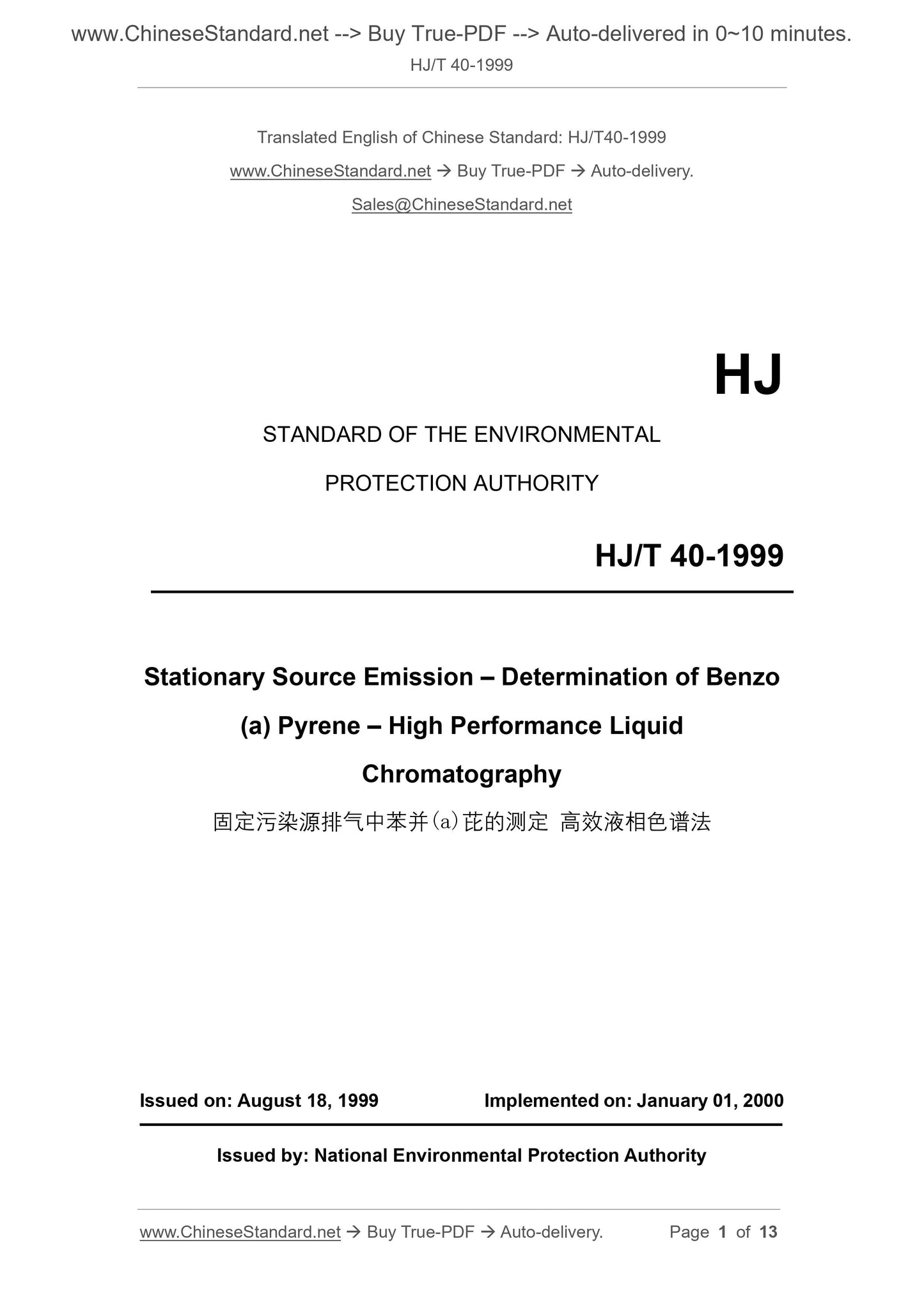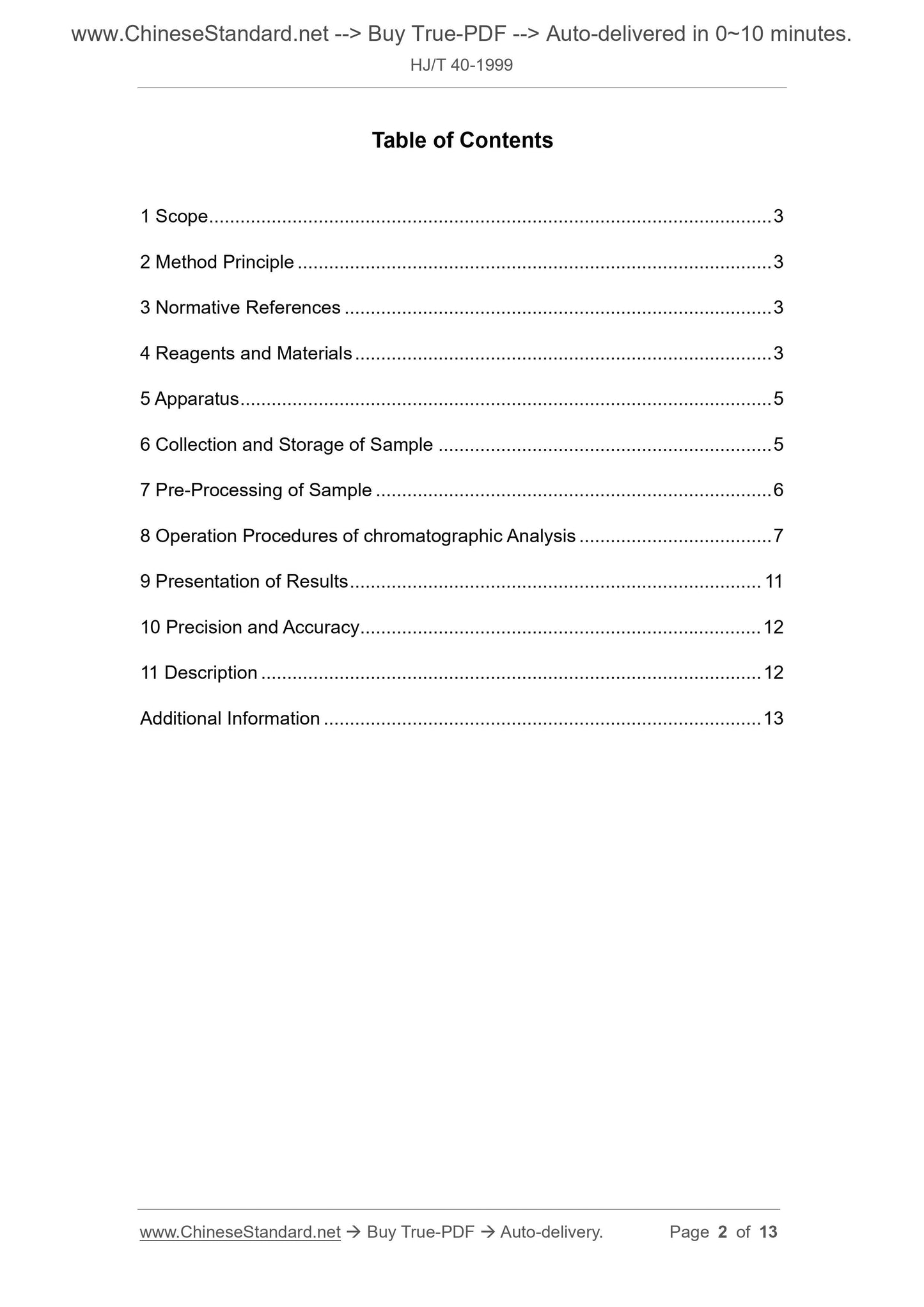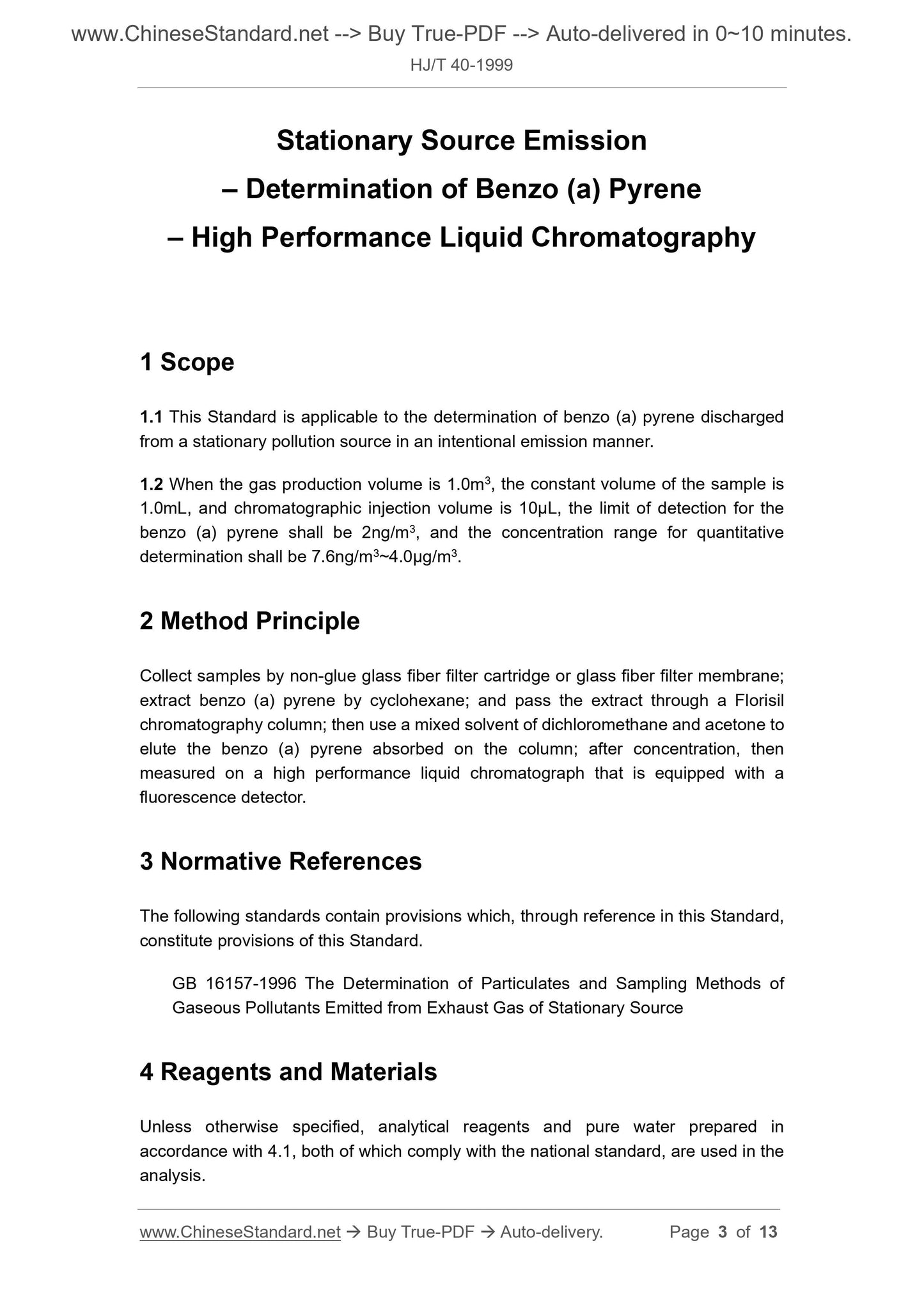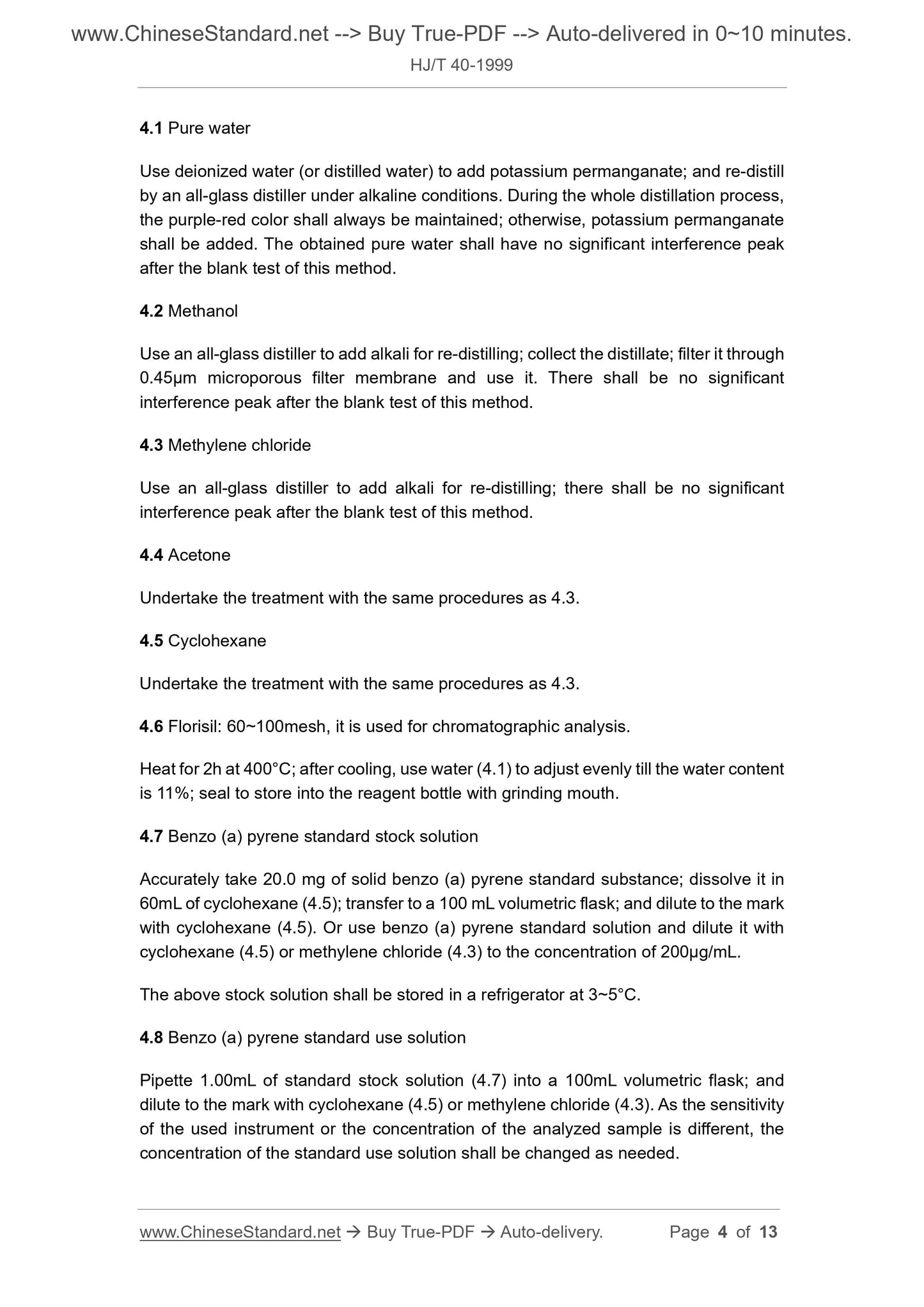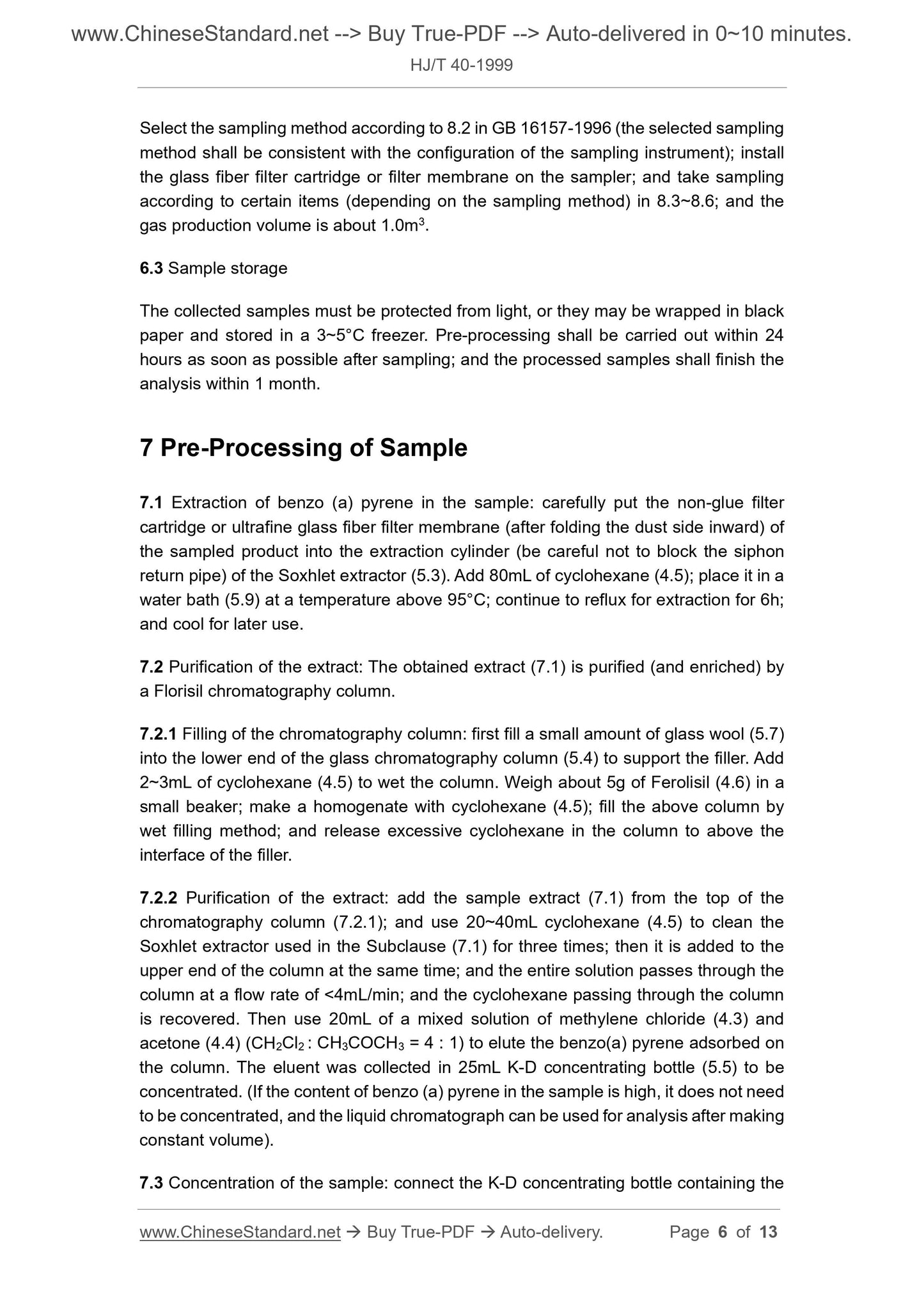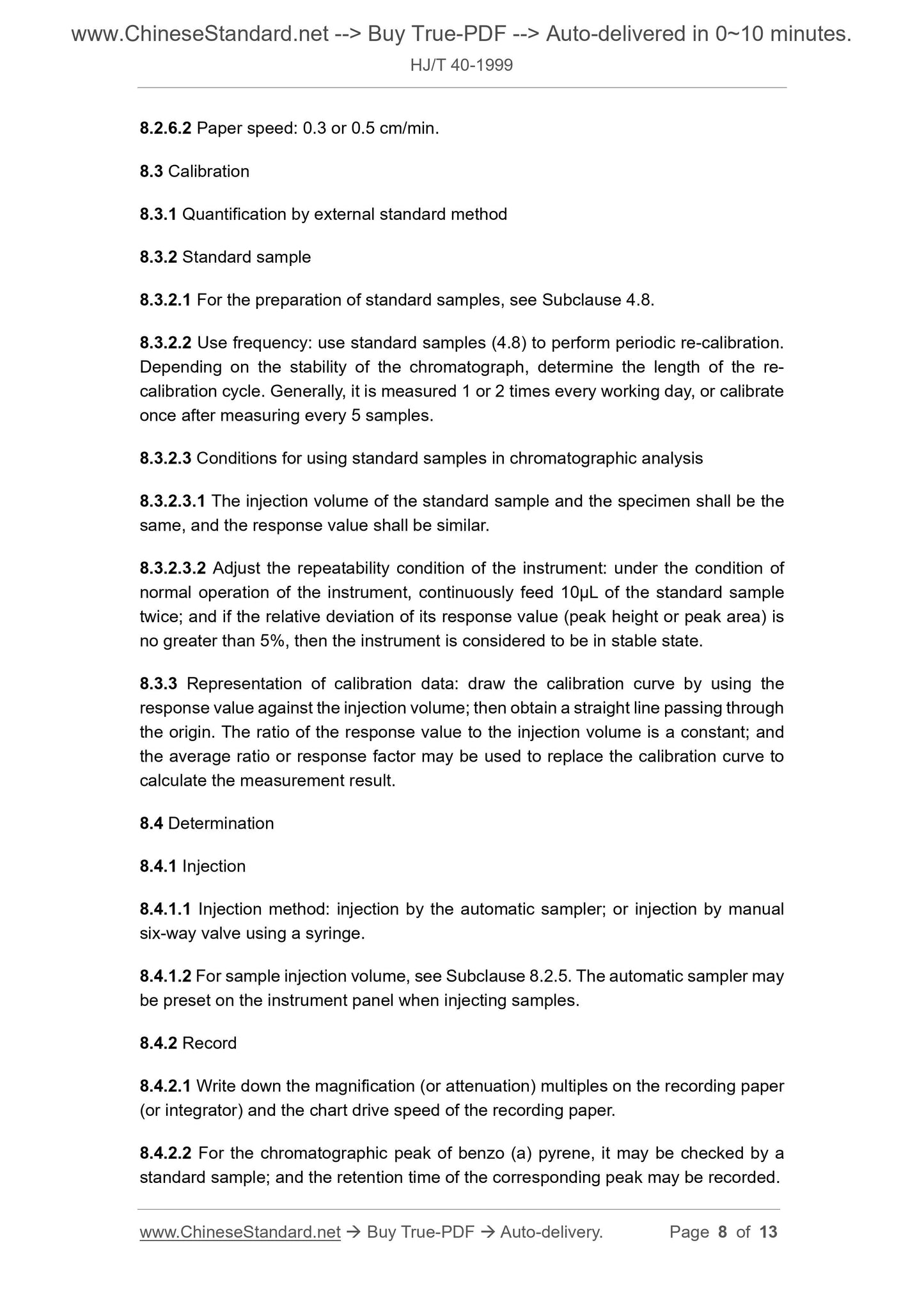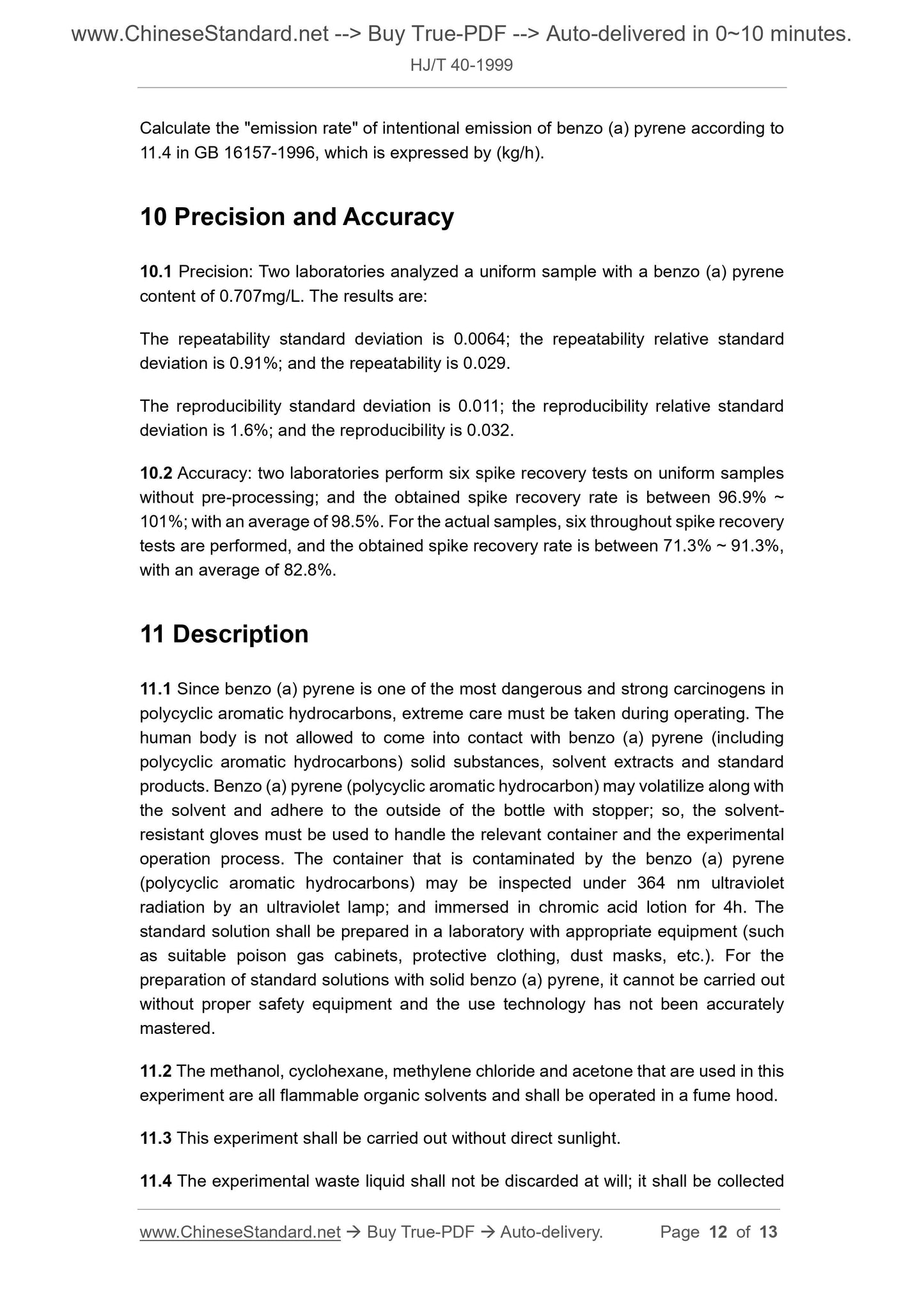1
/
of
7
www.ChineseStandard.us -- Field Test Asia Pte. Ltd.
HJ/T 40-1999 English PDF (HJ/T40-1999)
HJ/T 40-1999 English PDF (HJ/T40-1999)
Regular price
$140.00
Regular price
Sale price
$140.00
Unit price
/
per
Shipping calculated at checkout.
Couldn't load pickup availability
HJ/T 40-1999: Stationary source emission. Determination of benzo(a) pyrene. High performance liquid chromatography
Delivery: 9 seconds. Download (and Email) true-PDF + Invoice.Get Quotation: Click HJ/T 40-1999 (Self-service in 1-minute)
Newer / historical versions: HJ/T 40-1999
Preview True-PDF
Scope
1.1 This Standard is applicable to the determination of benzo (a) pyrene dischargedfrom a stationary pollution source in an intentional emission manner.
1.2 When the gas production volume is 1.0m3, the constant volume of the sample is
1.0mL, and chromatographic injection volume is 10µL, the limit of detection for the
benzo (a) pyrene shall be 2ng/m3, and the concentration range for quantitative
determination shall be 7.6ng/m3~4.0µg/m3.
Basic Data
| Standard ID | HJ/T 40-1999 (HJ/T40-1999) |
| Description (Translated English) | Stationary source emission. Determination of benzo(a) pyrene. High performance liquid chromatography |
| Sector / Industry | Environmental Protection Industry Standard (Recommended) |
| Classification of Chinese Standard | Z25 |
| Classification of International Standard | 13.020.40 |
| Word Count Estimation | 9,990 |
| Date of Issue | 8/18/1999 |
| Date of Implementation | 1/1/2000 |
| Quoted Standard | GB 16157-1996 |
| Summary | This standard applies to emissions from stationary sources organized benzo (a) pyrene was measured. |
Share
